Nov 07, · High expressed emotion (EE) in a patient's family is a known risk factor of relapse in schizophrenia The three components of high EE criticism, hostility and emotional overinvolvement were developed through a datadriven approach and a focus on overt abrasive behaviours The influence of covert abrasive behaviours has not been exploredV6110 (Z630) Relationship Distress With Spouse or Intimate Partner V6103 (Z635) Disruption of Family by Separation or Divorce V618 (Z638) High Expressed Emotion Level Within Family V62 (Z634) Uncomplicated Bereavement Educational and Occupational Problems V623 (Z559) Academic or Educational ProblemJan 02, 18 · Even in the early course of psychosis, high expressed emotion (EE) is present, on average, in over half of the patient–carer relationships (Reference Patterson, Birchwood and Cochrane Patterson et al, 00;

Expressed Emotion As An Adaptation To Loss The British Journal Of Psychiatry Cambridge Core
High expressed emotion level within family icd 10
High expressed emotion level within family icd 10-Reference Bachmann, Bottmer and Jacob Bachmann et al, 02;High expressed emotion level within family Z638 Other specified problems related to primary support group Homelessness Z590 Homelessness Imprisonment or other incarceration Z651 Imprisonment and other incarceration Inadequate housing Z591 Inadequate housing Insufficient social insurance or welfare support Z597




List Of Every Dsm 5 Diagnosis Counseling And Life Coaching Blog
May 13, 15 · V6110 (Z630) Relationship distress with spouse or intimate partner V6103 (Z635) Disruption of family by separation or divorce V618 (Z638) High expressed emotion level within family V62 (Z626) Uncomplicated bereavement Emotional Neglect PAS Children V61 (Z6) Parentchild relational problem V618 (Z621) Sibling relational problemPerceive high EE from relatives Family caregiver interventions can reduce EE and strengthen caregivers' selfesteem and coping, and improve outcomes for the family member with mental illness 11 CBT incorporated within a GSH manual may be one way of decreasing EE in a family caregiver supporting a member with depression GSH is a form of10 Incarcerated household member Z6229 Upbringing away from parents Z91 Other Personal Risk Factors Z638 High expressed emotion level within family Z754 Unavailability or Inaccessibility of Other Helping Agencies Z753 Unavailability or Inaccessibility of Health Care Facilities Z651 Imprisonment or Other Incarceration
Family Dysfunction refers to any forms of abnormal processes within a family such as conflict, communication problems, cold parenting, criticism, control and high levels of expressed emotions These may be risk factors for the development and maintenance of schizophrenia AO1V Codes (DSM5) & Z Codes (ICD10) Relational Problems V61 (Z6) ParentChild Relational Problem V618 (Z621) Sibling Relational Problem V618 (Z6229) Upbringing Away From Parents V6129 (Z628) Child Affected by Parental Relationship Distress V6110 (Z630) Relationship Distress With Spouse or Intimate Partner V6103 (Z635) Disruption of Family byWe examined whether expressed emotion (EE) influenced the social functioning of schizophrenia Twentynine subjects meeting the diagnostic criteria of ICD9 or DSMIIIR participated in the study The Camberwell Family Interview was conducted to evaluate EE, and subjects were divided into high EE an
Background Expressed emotion (EE) is a measure of the family environment that has been demonstrated to be a reliable psychosocial predictor of relapse in schizophrenia However, in recent years some prominent nonreplications of the EErelapse relationship have been published To more fully address the question of the predictive validity of EE, we conducted a metaanalysis of allHigh expressed emotional level within family;High EE level Having no history of comorbid drug misuse (mean=439;




Does The Cortisol Response To Stress Mediate The Link Between Expressed Emotion And Oppositional Behavior In Attention Deficit Hyperactivity Disorder Adhd Topic Of Research Paper In Clinical Medicine Download Scholarly Article Pdf And Read
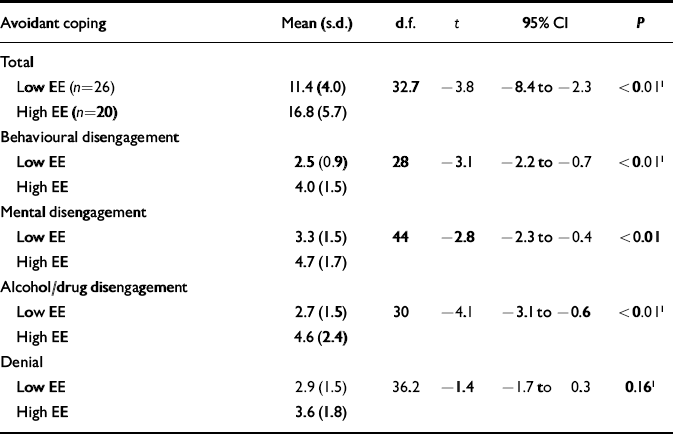



Expressed Emotion At First Episode Psychosis Investigating A Carer Appraisal Model The British Journal Of Psychiatry Cambridge Core
The family dysfunction explanation suggests that schizophrenia is caused by family experiences of conflict, communication problems, criticism and control This can be high expressed emotion which is where a family shows exaggerated involvement, control, criticism which increases the likelihood of relapseHigh expressed emotional level within family Inadequate family support NOS ICD10CM Alphabetical Index References for 'Z638 Other specified problems related to primary support group' The ICD10CM Alphabetical Index links the belowlisted medical terms to the ICD code Z638 Click on any term below to browse the alphabetical indexNov 07, · High expressed emotion (EE) in a patient's family is a known risk factor of relapse in schizophrenia The three components of high EE – criticism, hostility and emotional overinvolvement – were developed through a datadriven approach and a focus on overt abrasive behaviours The influence of covert abrasive behaviours has not been explored




Icd 10 Mental Health Diagnosis Codes F Codes Z Codes




Influence Of Parental Expressed Emotions On Children S Emotional Eating Via Children S Negative Urgency Munsch 17 European Eating Disorders Review Wiley Online Library
There are also alphabetical and numerical ICD10CM listings This listing includes the corrections dated 6//13 To order your very own DSM5, contact American Psychiatric Publishing here or at (800) DSMIVTR codes are (a subset of) ICD9CM codes and so can probably be found in the ICD9CM columnApr 21, 21 · Upbringing Away From Parents V6129 (Z628) Child Affected by Parental Relationship Distress V6110 (Z630) Relationship Distress With Spouse or Intimate Partner V6103 (Z635) Disruption of Family by Separation or Divorce V618 (Z638) High Expressed Emotion Level Within FamilyHowever, little evidencebased information is available to assist family caregivers of individuals with depression In the present exploratory study, we examined the effectiveness of a cognitive behaviour therapy (CBT) based guided selfhelp (GSH) manual in decreasing EE in




Using Machine Learning Analyses Of Speech To Classify Levels Of Expressed Emotion In Parents Of Youth With Mood Disorders Sciencedirect




Via Family A Family Based Early Intervention Versus Treatment As Usual For Familial High Risk Children A Study Protocol For A Randomized Clinical Trial Trials Full Text
However, little evidencebased information is available to assist family caregivers of individuals with depression In the present exploratory study, we examined theInadequate or distorted communication within familyOct 24, 15 · as Child affected by parental relationship distress V6110 (Z630) Relationship distress with spouse or intimate partner V6103 (Z635) Disruption of family by separation or divorce V618 (Z638) High expressed emotion level within family V62 (Z626) Uncomplicated bereavement Emotional Neglect PAS Children V61 (Z6)




Ppt Presentation Expression Of Bipolar Patients Evaluative Meaning And Influence Of Family Caregivers Expressed Emotion Ee Liebe Mint Academia Edu




Scielo Brasil Emocao Expressa De Familiares E Recaidas Psiquiatricas De Pacientes Com Diagnostico De Esquizofrenia Emocao Expressa De Familiares E Recaidas Psiquiatricas De Pacientes Com Diagnostico De Esquizofrenia
Expressed emotion refers to families that exibit high levels of criticism and hostility which is a source of stress and often the cause of relapses Research into psychological explanations Hooley done a meta analysis on 26 studies and found that people are twice as likely to relapse if they have a family with high expressed emotionAug 23, 18 · ICD10 code Z638 for Other specified problems related to primary support group is a medical classification as listed by WHO under the range Factors influencing health status and contact with health services High expressed emotional level within family Inadequate family support NOS Inadequate or distorted communication within familyChild and Family Behavior Health Oregon Early Childhood Diagnostic Crosswalk Laurie Theodorou, LCSW ( ICD 10) to aid behavioral health providers with developmentally appropriate and Oregon Health Plan reimbursable diagnoses High Expressed Emotion Level within Family V618 PrimaryOther Reactions to Severe Stress




Expressed Emotions In Patients With Obsessive Compulsive Disorder A Case Control Study Abstract Europe Pmc




The Danish High Risk And Resilience Study Via 7 A Cohort Study Of 5 7 Year Old Children Born Of Parents Diagnosed With Either Schizophrenia Bipolar Disorder Or Neither Of These Two
P=0004) were significantly associated with higher mean scores in total scale social support Efforts to improve social support are essential in managing patients with schizophreniaJan 31, 21 · See also article V Codes (DSM5) & Z Codes (ICD10) It is important to remember that many presentations of "psychiatric" concern are part of normal child development, or due to nonpsychiatric reasons such as parentchild relational conflicts, sibling relational problems, or high expressed emotion level within familyInadequate family support NOS;




Jcm Free Full Text Reduction Of High Expressed Emotion And Treatment Outcomes In Anorexia Nervosa Caregivers And Adolescents Perspective Html




V Codes Dsm 5 Z Codes Icd 10 Psychdb
Family members high in expressed emotion cause relapse in psychological disorders such as schizophrenia, alcoholism, children with learning disabilities, and bipolar disorder The stress from negative criticism and pity becomes a burden on the person with aHigh Expressed Emotion Level Within Family Expressed emotion is a construct used as a qualitative measure of the "amount" of emotion in particular, hostility, emotional overinvolvement, and criticism directed toward a family member who is an identified patient displayed in the family environment This category should be used when a family's high level of expressed emotion is the focus of clinical attention or is affecting the course, prognosis, or treatment of a familyThe code Z638 is valid during the fiscal year 21 from October 01, through September 30, 21 for the submission of HIPAAcovered transactions The ICD10CM code Z638 might also be used to specify conditions or terms like abuse counseling for offending parent, abusive emotional relationship, abusive emotional relationship, abusive emotional relationship with child, abusive emotional relationship with parents , alteration in family




Adverse Childhood Experience Ace Factors In Assessment Treatment Ppt Download




The Icd 10 Classification Of Mental And Behavioural Disorders
Oct 18, 19 · Z635 Disruption of family by separation or divorce Z638 High expressed emotion level within family Z640 Problems related to unwanted pregnancy Z Encounter for mental health services for victim of child abuse by parent Z Encounter for mental health services for victim of child neglect by parentThis category is to be used to record an episode of elevated blood pressure in a patient in whom no formal diagnosis of hypertension has been made, or as an isolated incidental finding cholesterol E7800 ICD10CM Diagnosis Code E7800 Pure hypercholesterolemia, unspecifiedDiagnostic Impressions (Note Be sure to use the ICD10 code, name of the disorder, and all of the specifiers) F1010 Alcohol Use Disorder, Mild Z6380 High Expressed Emotion Level within Family Rationale for Diagnostic Impressions (Note Use the DSM5 to explain how the client's symptoms are reflected in the diagnostic criteria for each




Family Psychoeducation With Caregivers Of Schizophrenia Patients Impact On Perceived Quality Of Life Verma Pk Walia Ts Chaudhury S Srivastava S Ind Psychiatry J




Orientation Training On Icd 10 Central Bureau Of Health Intelligence
V6110 (Z630) Relationship distress with spouse or intimate partner V6103 (Z635) Disruption of family by separation or divorce V618 (Z638) High expressed emotion level within family V62 (Z626) Uncomplicated bereavement For Children V61 (Z6) Parentchild relational problem V618 (Z621) Sibling relational problemJun 01, 18 · To test our hypothesis that high levels of relatives' EE, and its components CC and family EOI would be related to high levels of relatives' FB, first we conducted ttests to compare the levels of EE and FBThe results show that family members with high EE had a higher mean value for FB (mean = 345, SD = 141) than those with low EE (mean = 167, SD = 103), and thisPeople with schizophrenia are more likely to experience a relapse within family groups when there are high levels of expressed emotion (hostility, criticism or over involvement) within the family, compared to families who tend to be less expressive of their emotions 10 RCTs, RR 074 CI 05 to 10) Family intervention also seems to improve




V Codes Dsm 5 Z Codes Icd 10 Psychdb




A Study To Assess The Relationship Between Stigma And Expressed Emotion Among The Primary Care Givers Of Persons With Schizophrenia Attending Outpatient Department Of Lokopriyo Gopinath Bordoloi Regional Institute Of Mental Health
The relationships between expressed emotion (EE) of the families and the course of bipolar disorder have been examined only in a limited number of cohort studies No study has yet been reported from Asia The subjects were 12 patients that had been diagnosed with bipolar I disorder according to DSMIV and their 12 key family members The families of the patients wereP=0039), and having high level of psychoeducation within the family (mean=4,48;The family's expressed emotion has who met the ICD 10 diagnostic criteria for alcohol dependence syndrome, with history of relapse of alcohol use within 3 to 12 months of previous attempt at abstinence Cases were recruited from patients Patients with high levels of expressed emotion in their




Integrated Treatment Of First Episode Psychosis Effect Of Treatment On Family Burden The British Journal Of Psychiatry Cambridge Core
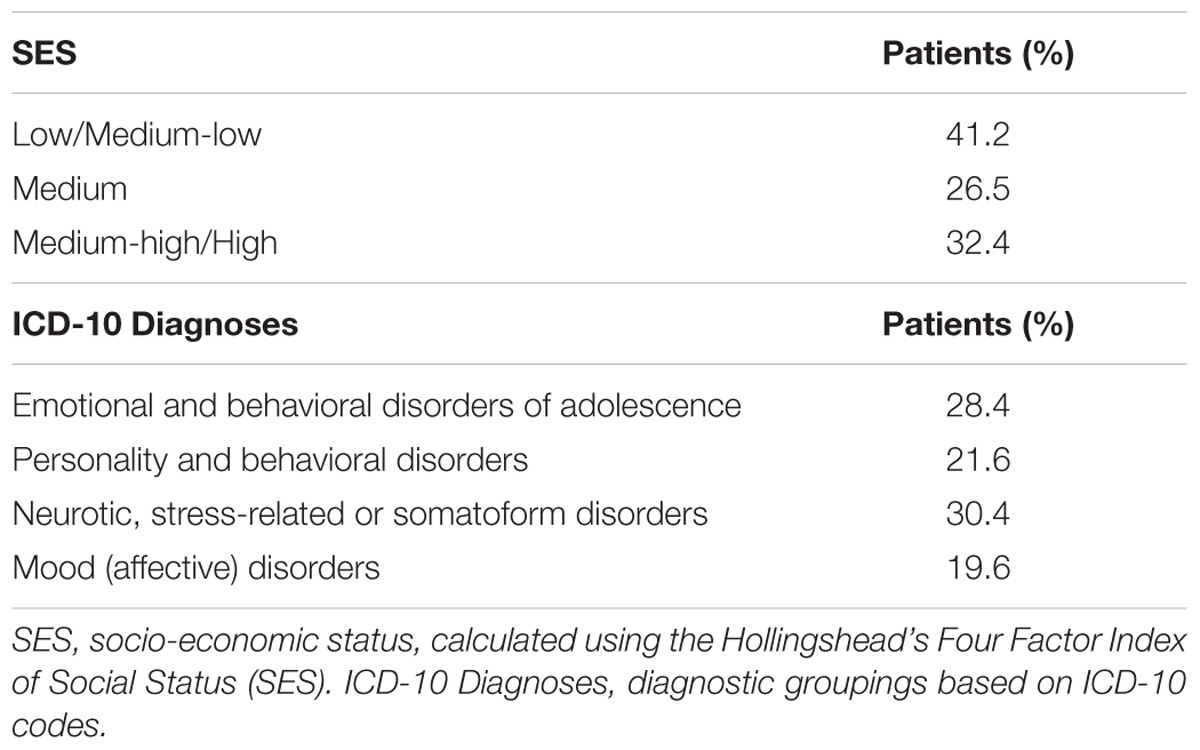



Frontiers Emotion Regulation And Parental Bonding In Families Of Adolescents With Internalizing And Externalizing Symptoms Psychology
Jul 23, 14 · · Background Caregivers of persons with firstepisode psychosis (FEP) often report high levels of distress Preventing longterm or chronic distress within the whole family is an important focus of early intervention for psychosis However, a more comprehensive understanding of the psychological factors involved is needed Aims To examine the impact of subjective appraisals and expressed emotionExpressed emotion refers to the degree of criticism, hostility and emotional overinvolvement in family relationships and interactions with a mentally ill patients Expressed emotion (EE), is a qualitative measure of the 'amount' of emotion displayed, typically in the family setting, usually by a family members or care takersOct 21, 15 · High expressed emotion (EE) can extend the duration of illness and precipitate relapse;




Expressed Emotion As An Adaptation To Loss The British Journal Of Psychiatry Cambridge Core




Effectiveness Of A Brief Psychoeducational Group Intervention For Relatives On The Course Of Disease In Patients After Inpatient Depression Treatment Compared With Treatment As Usual Study Protocol Of A Multisite Randomised Controlled Trial Springerlink
"Expressed emotion" (EE) is considered a marker of dysfunctional family interaction in patients with schizophrenia An alternative hypothesis, however, is that at least some of the different elements of EE really represent attempts on the part of carers to cope with and care for a relative with a psychiatric disorderHigh overall rating of expressed emotion, and 30% had a high rating for expressed emotion on the basis of critical comments, 24% on the basis of emotional overinvolvement and 13% on the basis of some hostility The mean number of critical comments was 35 (range 0–32) The mean rating for emotional overinvolvement was 18 (range 0–5), whereas'Expressed emotion' is a term used in mental health to denote the intensity of expression of a range of emotions within the family context Levels of expressed emotion may be high or low This emotion may be considered 'negative' (for example hostility, anger) or 'positive' (for example caring concern)




Pdf A Concise Self Report Scale Can Identify High Expressed Emotions And Predict Higher Relapse Risk In Schizophrenia




List Of Every Dsm 5 Diagnosis Counseling And Life Coaching Blog
Oct 01, · Z638 is a billable/specific ICD10CM code that can be used to indicate a diagnosis for reimbursement purposes The 21 edition of ICD10CM Z638 became effective on October 1, This is the American ICD10CM version of Z638 other international versions of ICD10 Z638 may differOct 21, 15 · High expressed emotion (EE) can extend the duration of illness and precipitate relapse;High Expressed Emotion Level Within Family V62 Z634 Uncomplicated Bereavement V6103 Z559 Academic or Educational Problem V618 Z56 Problem Related to Current Military Deployment Status V62 Z569 Other Problem Related to Employment V600 Z590 Homelessness V601 Z591 Inadequate Housing V60 Z592 Discord With Neighbor,




Pdf Influence Of Carer Expressed Emotion And Affect On Relapse In Non Affective Psychoses




Dsm 5 In Action Chapter 3 Understanding What S New And Applying It In Clinical Practice By Sophia F Dziegielewski Phd Lcsw C 14 S Dziegielewski Ppt Download
The speech is recorded and later coded for the overall level of EE, criticism, and EOI There is no hostility rating on the FMSS Level of Expressed Emotion Scale (LEE) The Level of Expressed Emotion Scale 23 is a 60item, self report measure that assesses the emotional environment in the patient's most important relationshipsExpressed emotion (EE), is a measure of the family environment that is based on how the relatives of a psychiatric patient spontaneously talk about the patient It specifically measures three to five aspects of the family environment the most important are critical comments, hostility, emotional overinvolvement, with positivity and warmth sometimes also included as indications of a lowEEOct 01, · The code Z638 has the following ICD10CM references to the Index of Diseases and Injuries Inclusion Terms Family discord NOS;




Implementation Of Guidelines On Family Involvement For Persons With Psychotic Disorders In Community Mental Health Centres Ifip Protocol For A Cluster Randomised Controlled Trial Bmc Health Services Research Full Text




Preventing The Entrenchment Of High Expressed Emotion In First Episode Psychosis Early Developmental Attachment Pathways Patterson 00 Australian And New Zealand Journal Of Psychiatry Wiley Online Library
DSM5 Diagnoses and ICD9CM and ICD10CM Codes, Alphabetical Listing ICD9 ICD10 Disorder, condition, or problem CM CM V623 V624 Z559 Academic or educational problem 30 Z603 Acculturation difficulty 3099 F430 Acute stress disorder 3090 3093 Adjustment disorder 3094 F43 Adjustment disorder, Unspecified V7101 F4322 AdjustmentProblem ICD10CM Alphabetical Index use Z7 literacy Z559 low level Z550 specified NEC Z558 living alone Z602 lodgers Z592 loss of love relationship in childhood Z628 marital Z630 involving divorce Z635 estrangement Z635 gender identity F66 mastication K0 medical care, within family Z636 facilities Z759 specified NEC Z75A Case of Schizophrenia with High Expressed Emotion, Caregivers Burnout and Family Dysfunction Ms Sabana Nasrin Islam 1, Ms Buli Nag Daimari 2* ABSTRACT Ongoing family stress and demands during the course of treatment and care giving pose challenges for the mental health professionals besides the primary care provided by the family




Expressed Emotion In Relative Of Chinese Patients With First Episode Psychosis In Hong Kong 香港華裔思覺失調首發患者家屬的情緒表達性研究
.jpg?ezimgfmt=rs:382x513/rscb26/ng:webp/ngcb26)



Schizophrenia Diagnosis And Treatment Simply Psychology
Reference Heikkila, Kartsson and Taiminen Heikkila et al, 02)However, early high EE seems to




Alphabetical Listing Of Disorders




Adverse Childhood Experience Ace Factors In Assessment Treatment Ppt Download




Alphabetical Listing Of Disorders




Pdf Assessment Of Expressed Emotion In Family Members Of Patients With Schizophrenia In A Selected Medical College Hospital Assam




Pdf The Low Prevalence Of High Levels Of Expressed Emotion In Bali Robert Reverger Academia Edu




Jcm Free Full Text Reduction Of High Expressed Emotion And Treatment Outcomes In Anorexia Nervosa Caregivers And Adolescents Perspective Html




Alphabetical Listing Of Disorders




Pdf Effectiveness Of Family Interventions On Psychological Distress And Expressed Emotion In Family Members Of Individuals Diagnosed With First Episode Psychosis A Systematic Review




Kcm4issgegsqxm




Jim Messina Ph D Ccmhc Ncc Dcmhs Assistant Professor Ppt Download




Icd 10 Mental Health Diagnosis Codes F Codes Z Codes




Icd 10 Mental Health Diagnosis Codes F Codes Z Codes




Frontiers Child And Adolescent Depression A Review Of Theories Evaluation Instruments Prevention Programs And Treatments Psychology




Effectiveness Of Guided Self Help In Decreasing Expressed Emotion In Family Caregivers Of People Diagnosed With Depression In Thailand A Randomised Controlled Trial Bmc Psychiatry Full Text




Mood Disorder Wikipedia




The Effectiveness Of Family Interventions On Psychological Distress And Expressed Emotion In Family Members Of Individuals Diagnosed With First Episode Psychosis A Systematic Review Protocol Article Nursingcenter




Family Psychoeducation For Major Depressive Disorder Study Protocol For A Randomized Controlled Trial Topic Of Research Paper In Psychology Download Scholarly Article Pdf And Read For Free On Cyberleninka Open




Expressed Emotion At First Episode Psychosis Investigating A Carer Appraisal Model The British Journal Of Psychiatry Cambridge Core




Using Machine Learning Analyses Of Speech To Classify Levels Of Expressed Emotion In Parents Of Youth With Mood Disorders Sciencedirect
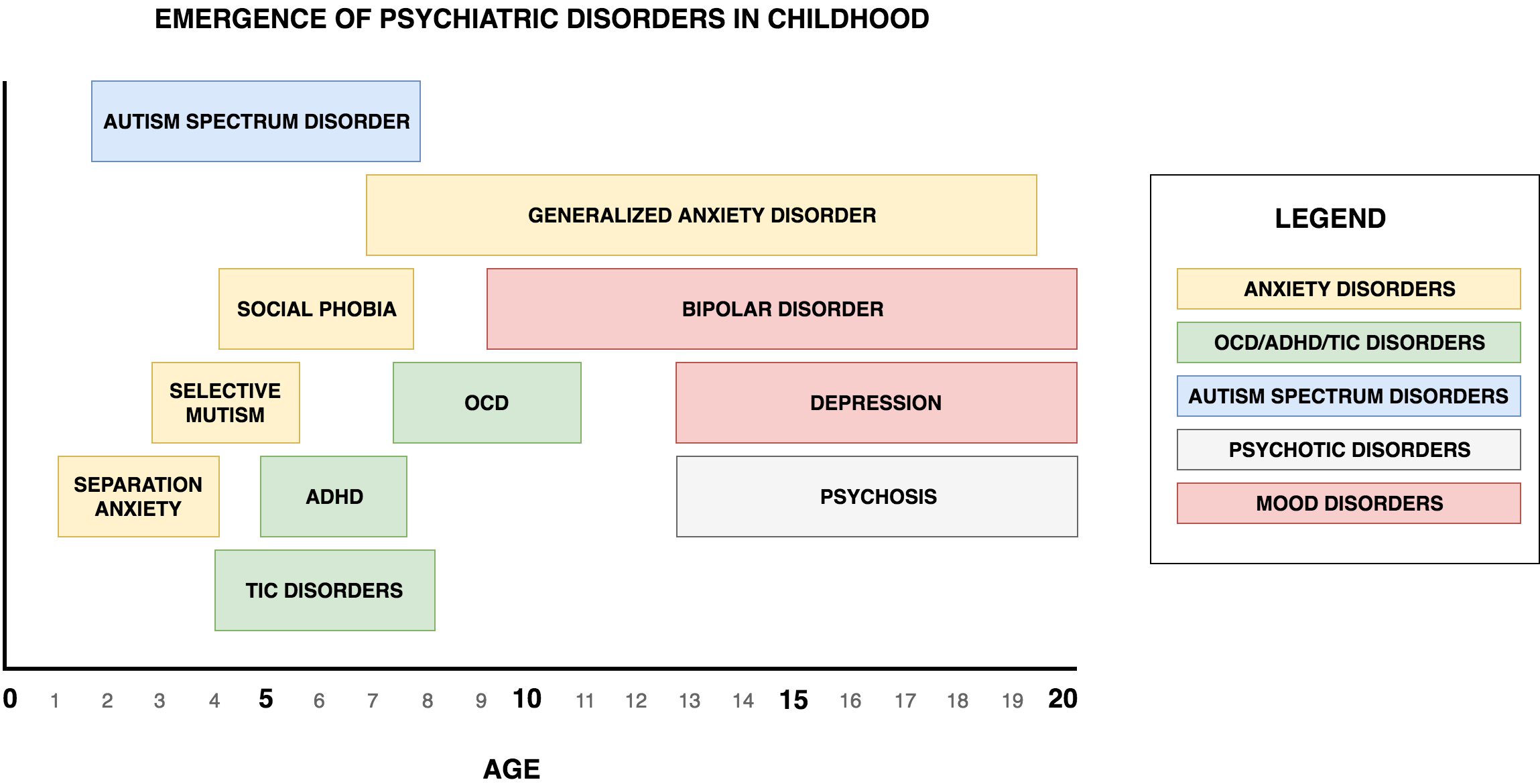



Child And Adolescent Psychiatry Psychdb




Frontiers Emotion Regulation And Parental Bonding In Families Of Adolescents With Internalizing And Externalizing Symptoms Psychology




Pdf Reduction Of High Expressed Emotion And Treatment Outcomes In Anorexia Nervosa Caregivers And Adolescents Perspective




Pdf The Family And Compliance In Schizophrenia The Influence Of Clinical Variables Relatives Knowledge And Expressed Emotion William Sellwood Academia Edu




Expressed Emotion In Relative Of Chinese Patients With First Episode Psychosis In Hong Kong 香港華裔思覺失調首發患者家屬的情緒表達性研究




Pdf Expressed Emotions Medication Adherence And Its Association With Disease Prognosis In Patients With Schizophrenia In Teaching Hospital Anuradhapura




Concordances And Discrepancies Between Icd 10 And Dsm Iv Criteria For Anxiety Disorders In Childhood And Adolescence Topic Of Research Paper In Clinical Medicine Download Scholarly Article Pdf And Read For Free On




Z Code For Family Conflict Family Club




V Codes Dsm 5 Z Codes Icd 10 Psychdb Pdf You Are Here Teaching Files V Codes Dsm 5 Z Codes Icd 10 Menu V Codes Dsm 5 Z Codes Icd 10 Table Course Hero




Jcm Free Full Text Reduction Of High Expressed Emotion And Treatment Outcomes In Anorexia Nervosa Caregivers And Adolescents Perspective Html
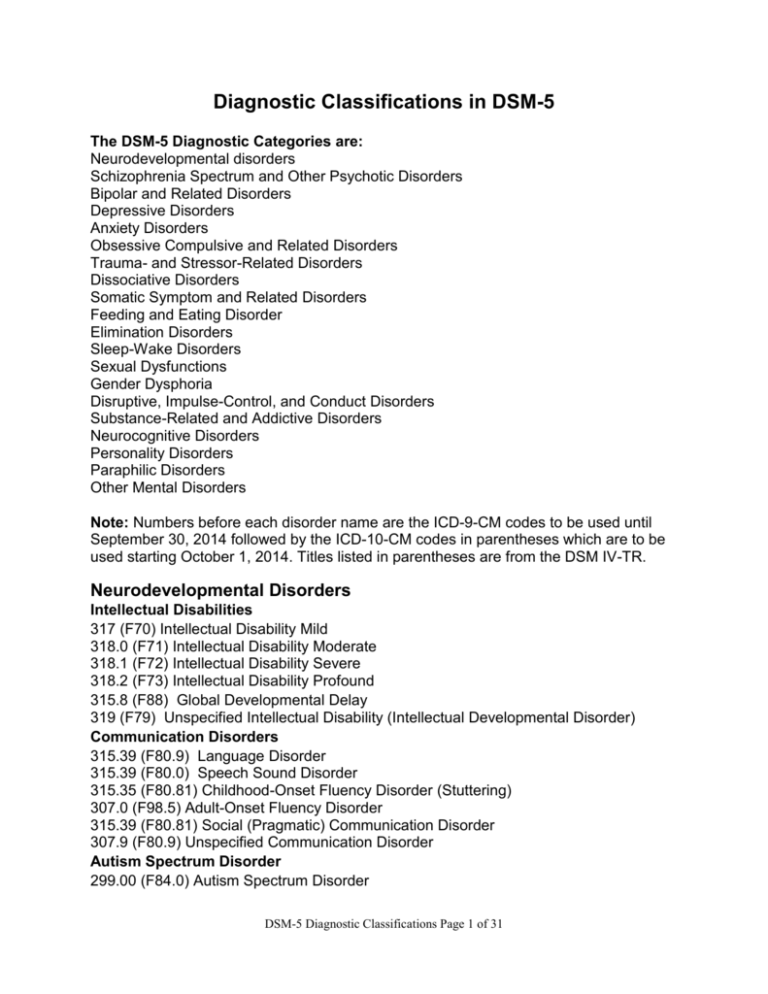



Diagnostic Classifications In Dsm 5 The Dsm 5
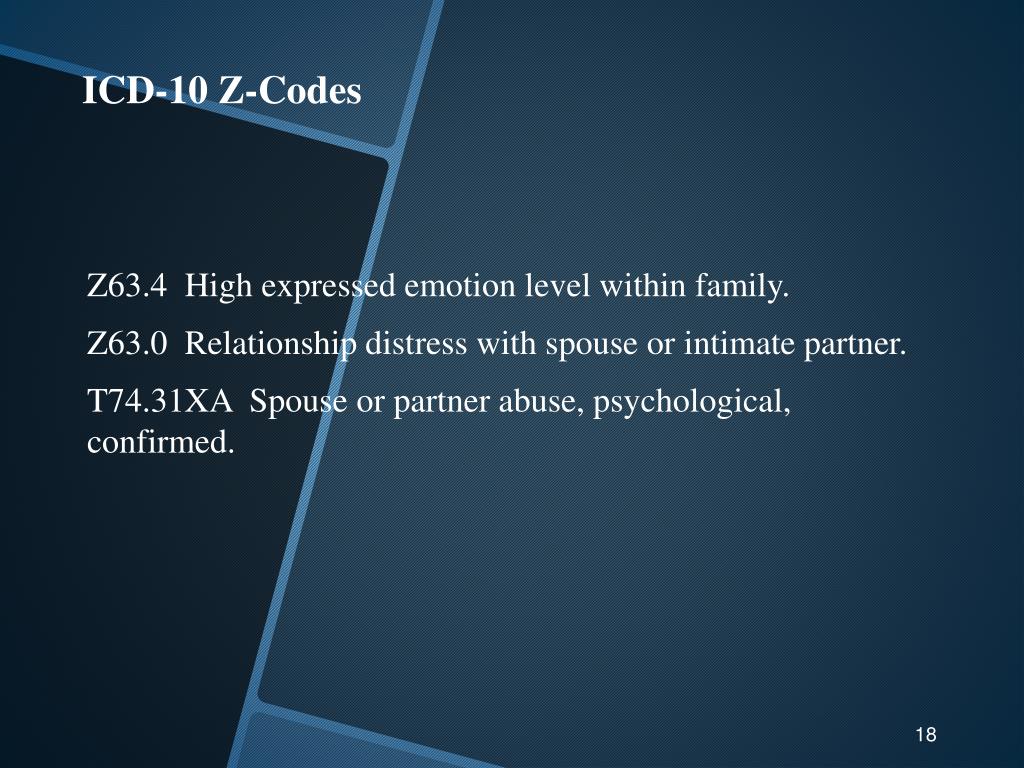



Ppt Dsm 5 Powerpoint Presentation Free Download Id




Family Centric Rehabilitation For Persons With Mental Illness In India Conceptual Framework Using Evidence Based Case Studies Sciencedirect



0 件のコメント:
コメントを投稿